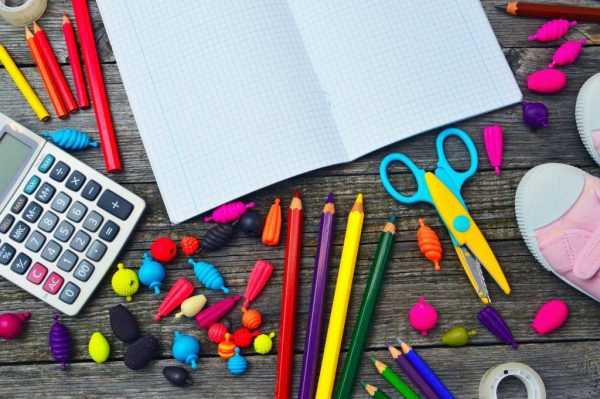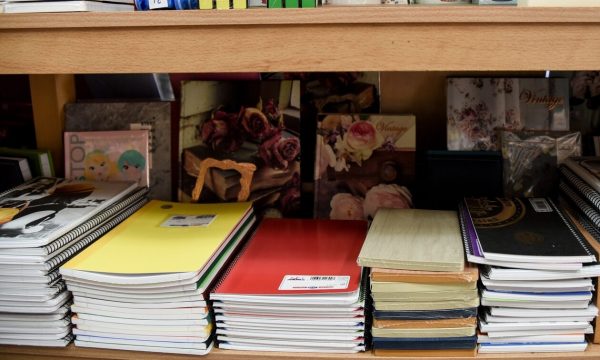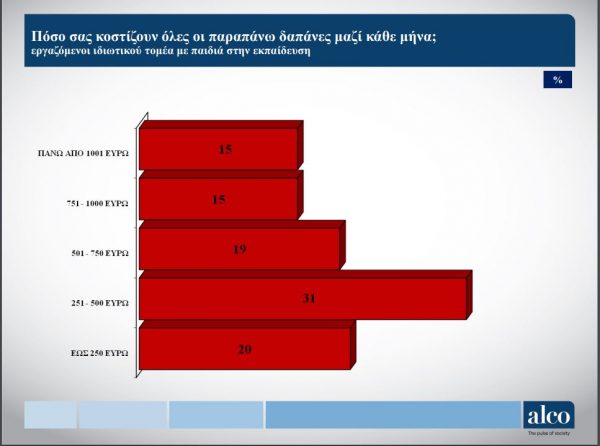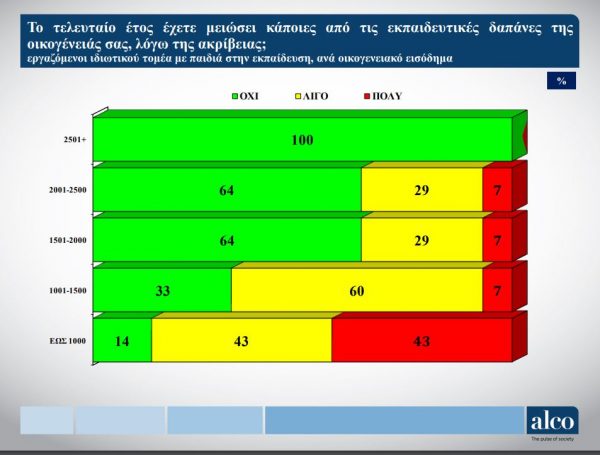
The “Student Basket” will be launched for the first time on Wednesday, as the Minister of Development confirmed that there is absolutely no reason to raise the prices of school supplies this year.
For their part, the large stores and chains, through SELPE (Association of Retail Companies in Greece), pledged that “we will do everything we can to ease the family budget before this school year.”
They support the size of the school supply basket, but on the other hand they offer, as they say, “serious thinking.”
Specifically, they noted that Greek businesses in recent months have been tested as they “see falling demand, increasing their costs, especially in transport and energy, and at the same time bear the burden of shifting responsibility for government social policy.”
The cost of stationery is only a small part of the expenses that burden the family budget for children’s education.
SELPE boldly expresses its dismay, not specifically about the student basket, but about “the continuation of interventionist government measures.”
They claim that the measures taken by the government, combined with falling demand and rising costs, “put the core of the Greek economy, which is every Greek company, in a very difficult financial situation.”
Betting on the “student basket”
According to an announcement by the President of the Piraeus Chamber of Commerce and Industry, Vassilis Korkidis, it is estimated that we will not have increases in school supplies this year, as there was a year-on-year decrease in stationery of -6% in July. This reduction is expected to partially contain the increase in transportation costs, especially in imports from China, which also concerns the majority of stationery.
However, according to the Consumer Price Index (ELSTAT) (July data), stationery and design materials have become 2.8% more expensive since last September. In contrast, wholesale imports of paper goods fell by -2.3%, and wholesale prices of manufacturing paper goods fell by -8%.
The cost of stationery is only a small part of the expenses that weigh on the family budget for children’s education. Traditionally, these costs are more magnified in September, since the start of the school year comes with additional costs.
In addition to tuition fees for teaching, language schools and extracurricular activities, the student’s list includes a number of necessary expenses, with reasonable costs: craft drawing supplies, handbags – purses – snack bowls (especially for preschool and first grades of primary school), foreign language books, school supplies, tracksuits – sportswear, and the most expensive of all, sports shoes, the price of which starts from 100 euros for famous brands that teenagers demand.
Traders expect prices to rise by up to 15% – Ministry of Development denies
Last year, according to EBEP, school supply price increases averaged 10%. This year, based on empirical research that has come to light, many school supplies have seen increases of 10% to 15%, while some branded products have seen price increases of up to 22%.
Primary school bag – trolley, medium brand costs between 60 and 70 euros
The Ministry of Development speaks of “untrue rumours”, as no increases are expected on average. The truth is that in school supplies there is a wide range of prices, depending on the quality and the supplier. Large stores and chains often have more flexibility than small shops in the neighbourhood to offer certain items, usually more modest, at “high” prices.
Thus, there are estimates (EBEP) that a school bag can cost between 20 and 50 euros. But a primary school bag – a medium-sized branded trolley costs between 60 and 70 euros.
Increases of up to 18% within two years
However, according to official ELSTAT data, price increases in the core categories of children’s goods and services, schools and education range from 3% to 18% over two years. The price comparison is based on September 2022, when increases in energy, transport and raw materials have already been passed on to retail.
In detail compared to September 2022:
- Children’s clothing prices increased by 11% (based on pre-sale prices)
- Children’s shoes: 18% (similar)
- Educational books: 4.8%
- Stationery and drawing supplies: 3%
- Computers: 7.2%
- Education: 3% to 5% (depending on rank)
Public Opinion Poll: Monthly Stipend to Cover Education Expenses
Public education is not just free, according to a 2024 public opinion poll by polling firm Alco on behalf of INE-GSEEOne in two families pays more than 500 euros per month to cover education expenses.
The sample concerns private sector employees who have children in education. Expenses include among others: foreign language education, music – sports activities (one in four parents pays), private lessons (36% of parents pay), private schools – IEK or university tuition fees (10%), living expenses for students in another city (30%).
Of the sample of respondents, 20% pay up to 200 euros per month, 31% from 251-500 euros per month, 19% from 500 to 750 euros per month, and 15% pay from 750 to 1000 or more than 1000 euros per month.
86% of workers earning up to €1,000 per month have reduced their family’s educational expenses due to punctuality (43% a lot, 43% a little). 67% of those earning between €1,000 and €1,500 have done the same (7% a lot, 60% a little).

“Avid problem solver. Extreme social media junkie. Beer buff. Coffee guru. Internet geek. Travel ninja.”










More Stories
“Recycling – Changing the water heater”: the possibility of paying the financing to the institution once or partially
Libya: US General Meets Haftar Amid Tensions Between Governments
New tax exemption package and incentives for business and corporate mergers..